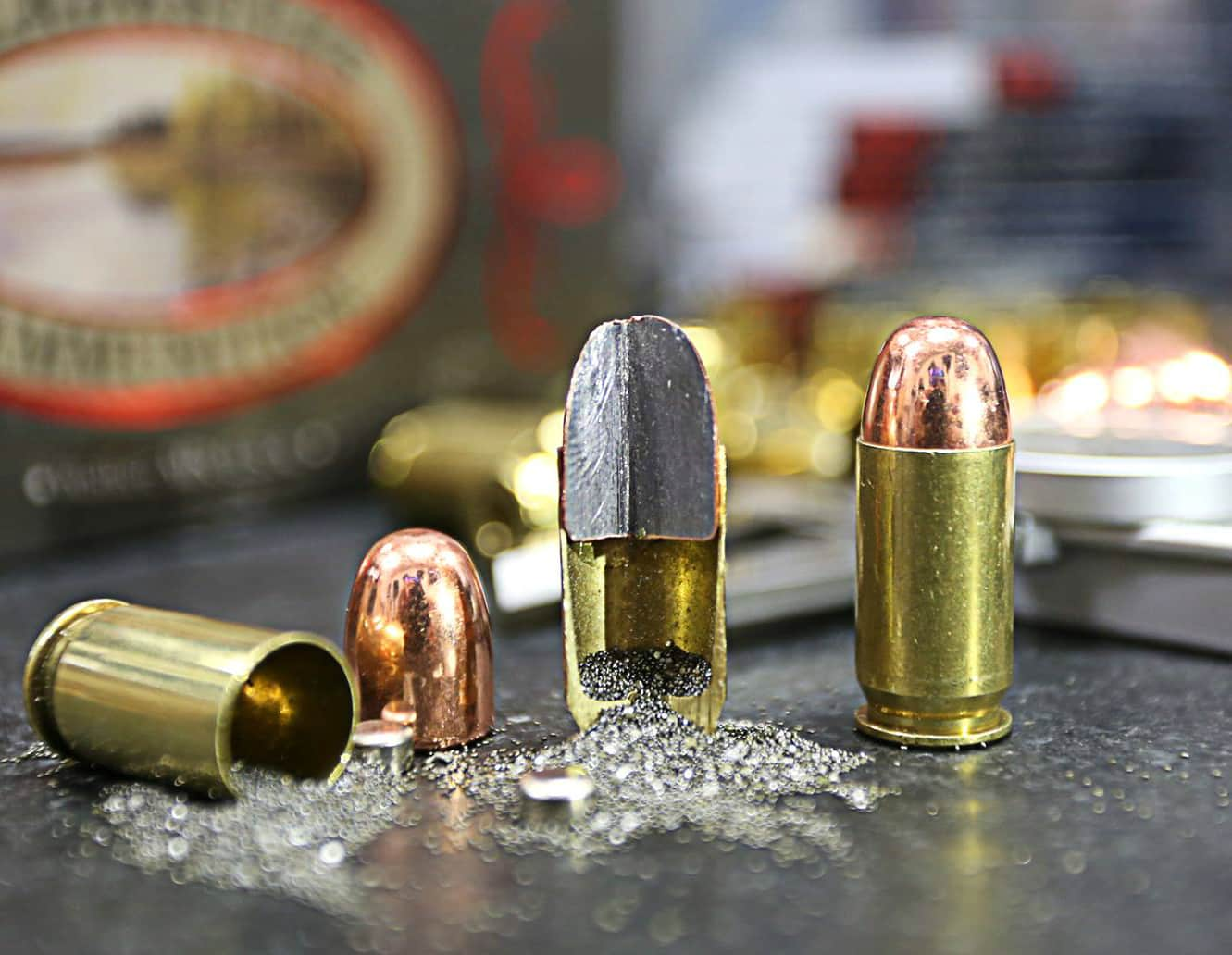Cartridges Cut in Half: A Unique Look at 6 Popular Rounds
Dave Maas 10.19.16

Have you ever wondered what ammo and its components look like internally? If so, check out the interesting and educational photos below. During a bit of free time at FOG (Finger of God) Firearms and Cartridge Company, our staff cut in half six popular hunting, shooting and self-defense rounds to provide a glimpse like you’ve probably never seen before.
Warning: Don’t try cutting apart ammo at home. The cartridges shown here are for demonstration purposes only; the ammo alterations were made by trained professionals (us!).

.223 Rem. on the left, 5.56 NATO on the right
Bullet weight: 45 to 77 grains
Bullet style: Various
Velocity: 2,750 to 3,750 fps
Year designed: 1964
This popular round was the first to be cut in two, showing the base internal components of the popular cartridge. The process was as simple as using a hacksaw to bisect and a belt sander to polish. To the naked eye, the differences are nearly indistinguishable aside from annealing of the .223. Some people also say they can see the crimp in the primer pocket of the 5.56. (Note: There is no gun powder shown in the above pic, and the whitish highlights on the cartridge edges are simply glare. Hey, we’re ammo experts, not award-winning photographers.)

9mm Luger
Bullet: 125-grain Sierra jacketed hollow point
Velocity: 1,090 fps
Year designed: 1901
This bisection is a 9mm jacketed hollow point round with flake powder held together with super glue. After this self-defense round was cut for the photo, the round was polished by hand. Some think that the powder looks like worms or sticks, but it is in fact the flake stacking up on itself to give you an inside view. Designed by Georg Luger, the round is heavily used today by civilians, military, competitive shooters and law enforcement.

.308 Winchester
Bullet: 168-grain Sierra hollow point boat tail
Velocity: 2,750 fps
Year designed: 1952
The image above shows the cut brass case and displays the full bullet, primer and powder load. A spec amount of powder was used to create the model powder form. An estimated 10 percent volume was added during the forming process, along with an undetermined amount of air pockets.

.300 AAC Blackout
Bullet weight: 220-grain Sierra hollow point boat tail
Velocity: 1,050 fps
Year designed: Early 1990s
This cartridge was first designed for special operations groups needing more stopping power. For this model of the 300 BLK, a Dremel tool was used to create a pie cut within the bullet and brass case. A measured amount of power was formed inside the case with super glue, which displays roughly 65 percent of spec charge. Ever popular with the use of a suppressor, the low amount of powder is due to the rounds subsonic capabilities of traveling below the speed of sound (1,126 fps).

Components of the .45 ACP on the left; bisection in the middle; unaltered round on the right
Bullet: 230-grain Berries Bullets round nose
Velocity: 850 fps
Year designed: 1904
One of the most popular calibers of its time, the round was first developed for use in John M. Browning’s 1911 Automatic Colt Pistol, and it’s still used today by shooters and military alike. This photo captures three different stages of the popular .45 ACP round. The powder your see spilling from the pie cut round is to represent the specifications as if the rounds were loaded properly and not cut in half.

.50 BMG on the right; for comparison, .223 Rem. with 55-grain Hornady FMJ on the left (no powder)
Bullet weight: 750-grains full metal jacket
Velocity: 2,800 fps
Year introduced: Late 1910s
Last, but certainly not least, is the .50 caliber BMG round. Infamous for its use in the M2 machine gun, and capable of reaching a maximum ballistic range of 7,000 meters, the round has proven its dominance in nearly every major conflict in the world for more than a century. A typical round uses over 225 grains of powder – that’s almost 10 times the amount in a 5.56 NATO round!

All of the cutaways lined up from left to right: 9mm JHP; .45 ACP; .300 AAC Blackout; .223 Rem.; .308 Win.; .50 BMG
Editor’s note: FOG (Finger of God) Firearms and Cartridge Company in Walker, Minnesota, is a family owned and operated ammunition manufacturer that specializes in high-quality loaded cartridges in many different calibers using only premium bullets and propellants.


